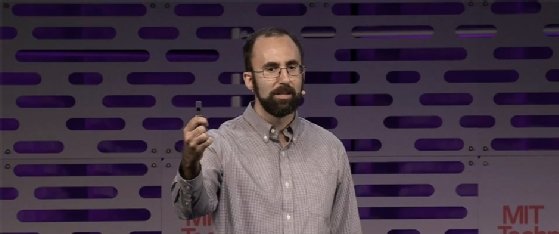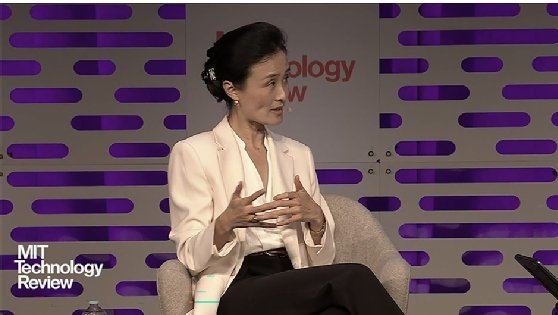
EmTech MIT 2025 looks at the future of U.S. nuclear energy
Experts at EmTech MIT 2025 discussed the latest breakthroughs in sustainable technology and nuclear energy. What successes do they predict for the future of nuclear in the U.S.?
CAMBRIDGE, MA -- The dialogue around nuclear power is heating up in the public and private sectors, if conversations during EmTech MIT 2025, hosted by MIT Technology Review, are any indication.
In May 2025, President Donald Trump issued several executive orders aimed at stimulating investment and growth in nuclear energy projects. According to Pew Research Center, the majority of U.S. adults find this approach favorable, with approximately 60% of U.S. adults holding a positive view of nuclear power as a source of electricity. As eyes and cash flows continue to turn toward nuclear energy, the possibility of a nuclear future is likely -- and worth preparing for. At least that's one possibility experts at EmTech MIT predicted.
Conference speakers and attendees discussed current initiatives in the nuclear sector as well as potential roadblocks to expanding this energy source. But do the benefits outweigh the cost of nuclear implementation?
The pros and cons of nuclear energy
During an interview with TechTarget Editorial, Dr. Koroush Shirvan, professor of nuclear science and engineering at MIT, said that nuclear hesitancy is waning among Americans as they discover the benefits of nuclear energy. He cited the following as key benefits of nuclear energy:
- Energy resiliency. Shirvan said that one nuclear fuel pellet could meet the energy needs of one person for an entire year. Theoretically, recycling this fuel could meet someone's energy needs for a lifetime. This kind of electricity generation could also be valuable to organizations looking to supply power to data centers.
- Less pollution. Nuclear fission creates less pollution than any other energy source during its lifecycle, Shirvan said. The lifecycle used to create energy with nuclear fission includes everything from mining uranium to building the nuclear reactors themselves.
- Safety. "Nuclear has had an excellent record since its inception when you look at the number of incidents per megawatt hour," Shirvan said, during his EmTech MIT session, "Fission for the Future." Nonprofit data publisher Our World in Data suggested that nuclear energy, on average, could kill one person every 33 years, compared to fossil fuels that cause multiple deaths annually, due to factors such as air pollution and physical accidents during fuel extraction.
- Capacity factor. The capacity factor measures a power plant's actual electricity output compared to its maximum possible output. Nuclear energy has a capacity factor of 92.3%, according to the U.S. Energy Information Administration. This means nuclear plants can produce 90% of their total possible yield. In contrast, the capacity factor of natural gas is 17.2%.

These factors are largely why more countries are considering nuclear energy, Shirvan said.
"When you look globally, there are many more countries that are coming in and are attracted to nuclear because of the jobs it brings, as well as meeting their carbon emissions targets," Shirvan said. "Human civilization flourishes based on energy."
During his session, Shirvan also mentioned roadblocks that impede the advancement of responsible nuclear power in the U.S. These include the rising cost of uranium, a lack of stringent regulation around nuclear power plants and government investment in these projects. Shirvan said the U.S. should take note of countries like Canada that treat nuclear power as an infrastructure project.
For example, Canada's nuclear investment led to the construction of the first four small modular reactors (SMRs) among the G7 countries -- a historic advancement in nuclear energy that could produce enough energy to power 1.2 million Canadian homes.
SMRs and nuclear investment
Unlike traditional nuclear reactors, SMRs are more compact and built in modules that can be assembled in factories. These reactors use less land, require less construction time and cost less to build than traditional reactors. However, they only create about a third of the power that a traditional reactor can, according to the International Atomic Energy Agency.
SMRs represent an advancement in the nuclear sector as this technology begins to enter Western markets. This indicates that energy innovations are ongoing, as public and private stakeholders become increasingly aware of the effects of climate change and the rising cost of electricity.
Lucia Tian, head of advanced energy at Google, cited the rising cost of electricity during her session, "The Unseen Edge of Sustainability." She discussed how nuclear energy could provide a valuable business and infrastructure opportunity.
"What has been exciting with this shift to rising electricity demand and a real turnaround in the public opinion around nuclear is now we have this opportunity to look at assets that have been shut down," she said.

Those assets are nuclear plants across the country that were shut down and are now being seen as opportunities for reopening, rather than rebuilding. Google and NextEra Energy partnered in October to restart one such plant in Iowa. Tian also cited similar projects, like the energy cooperatives restarting a power plant in Michigan, and Microsoft working with Constellation Energy to restart the Three Mile Island plant in Pennsylvania.
Everett Bishop is assistant site editor for Informa TechTarget's AI & Emerging Tech group. He graduated from the University of New Haven in 2019.





